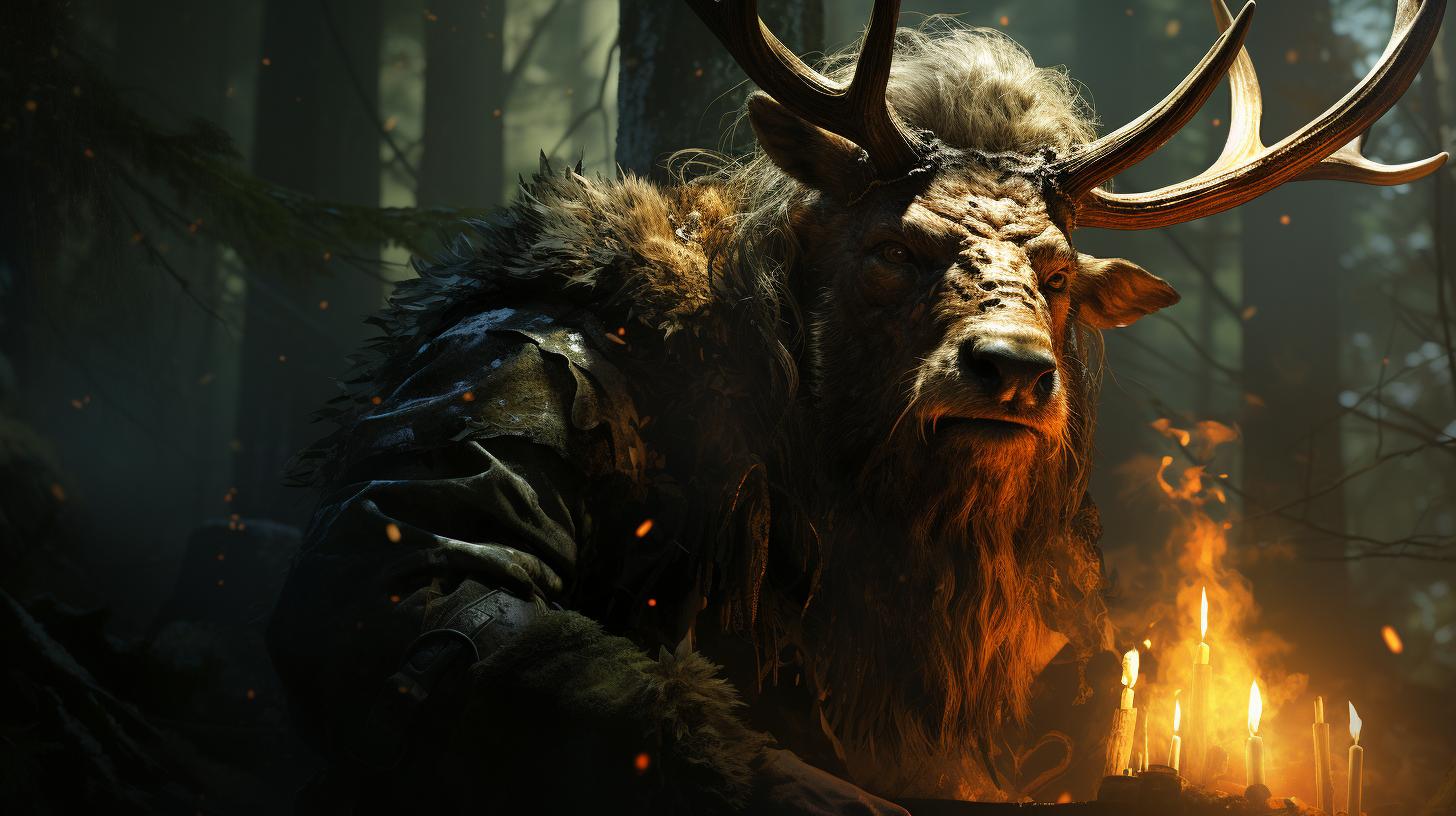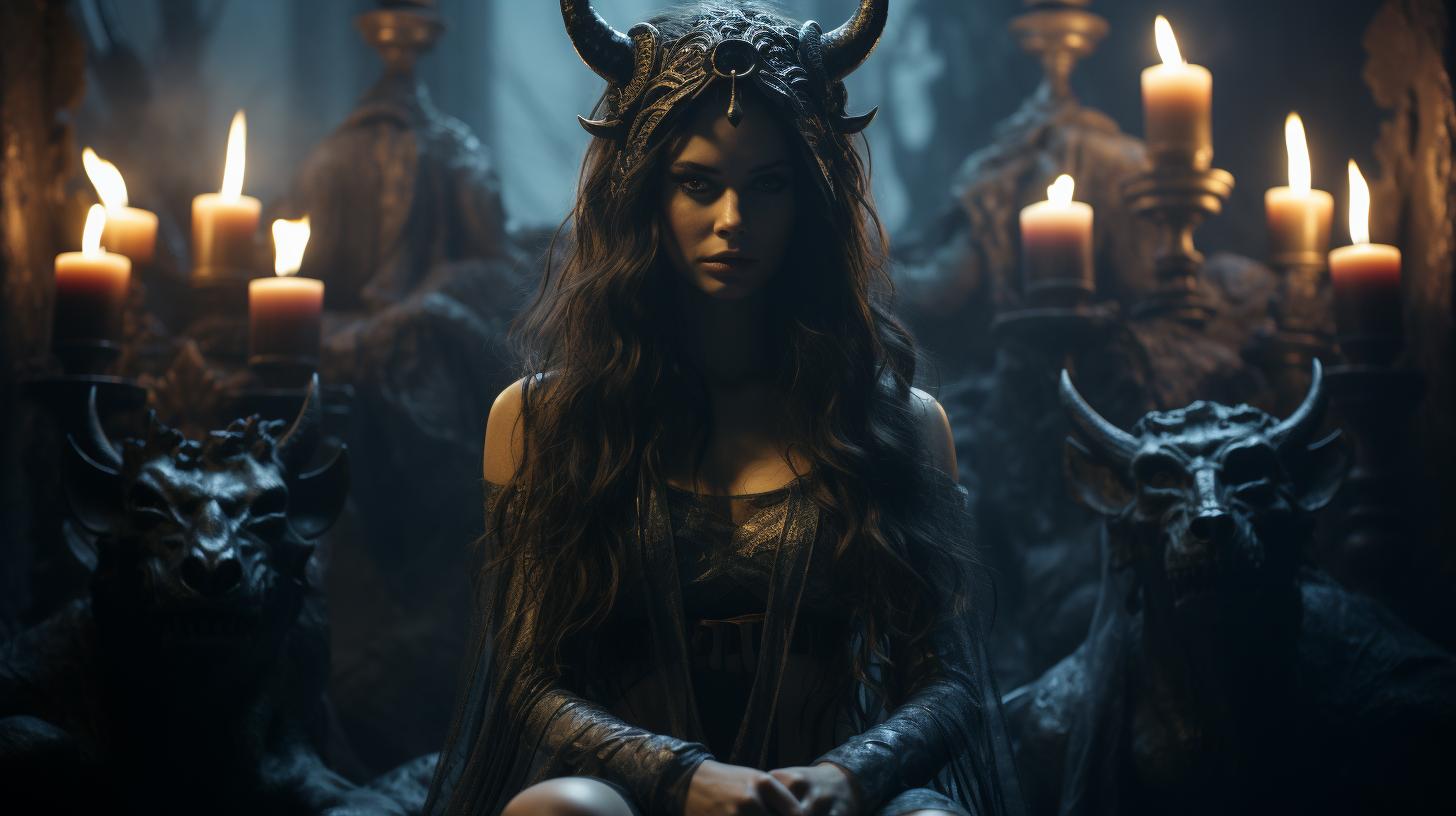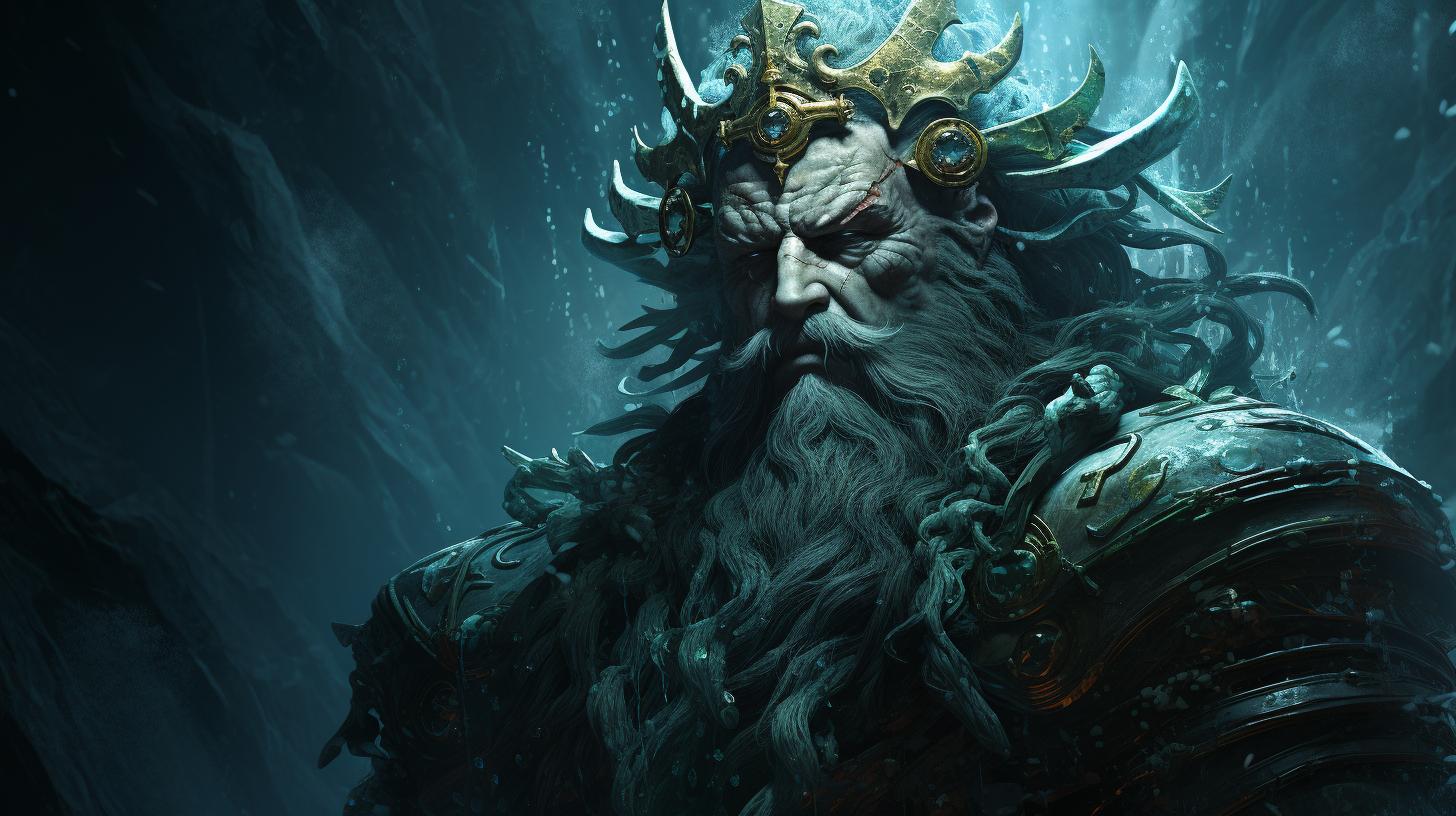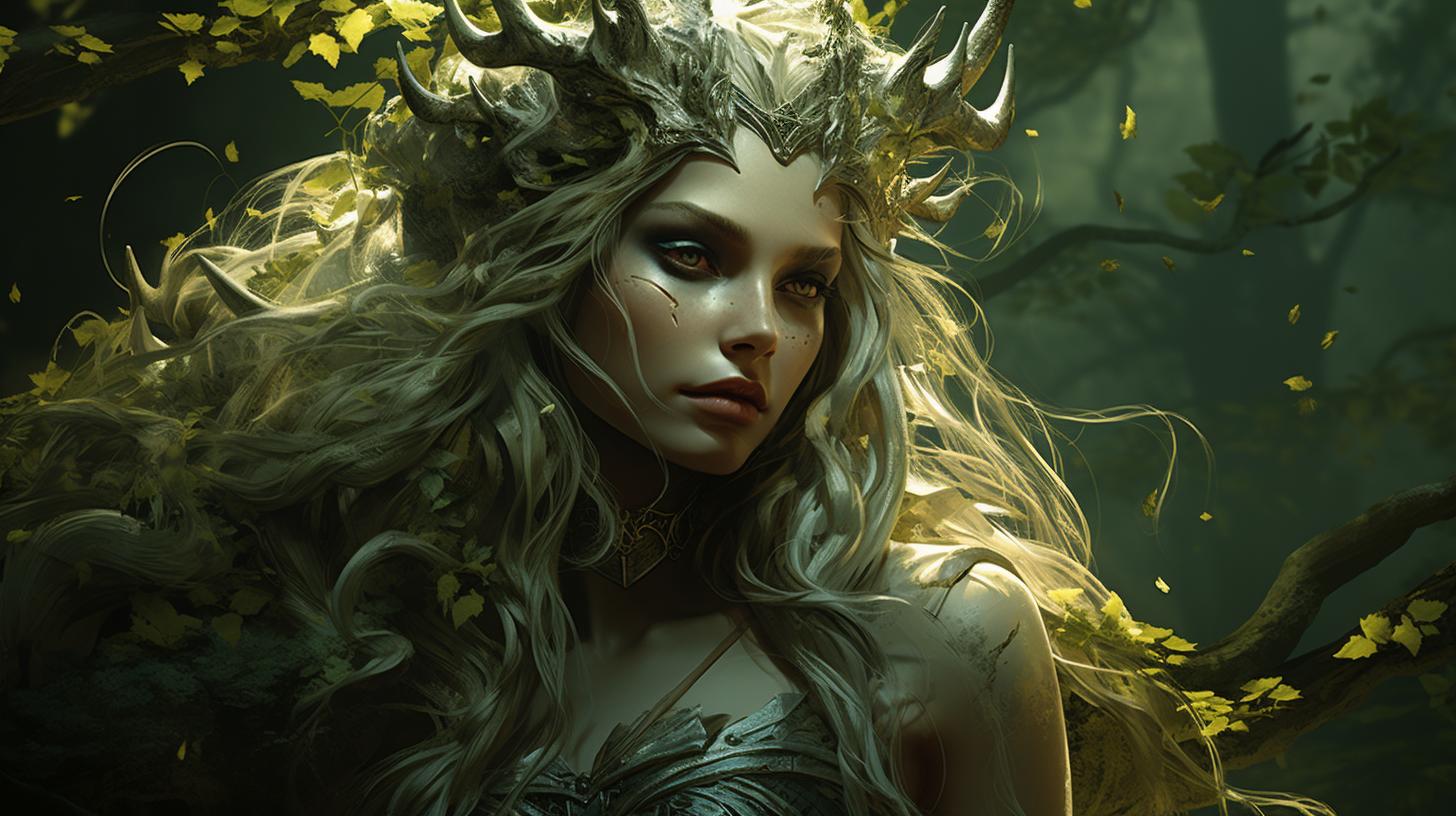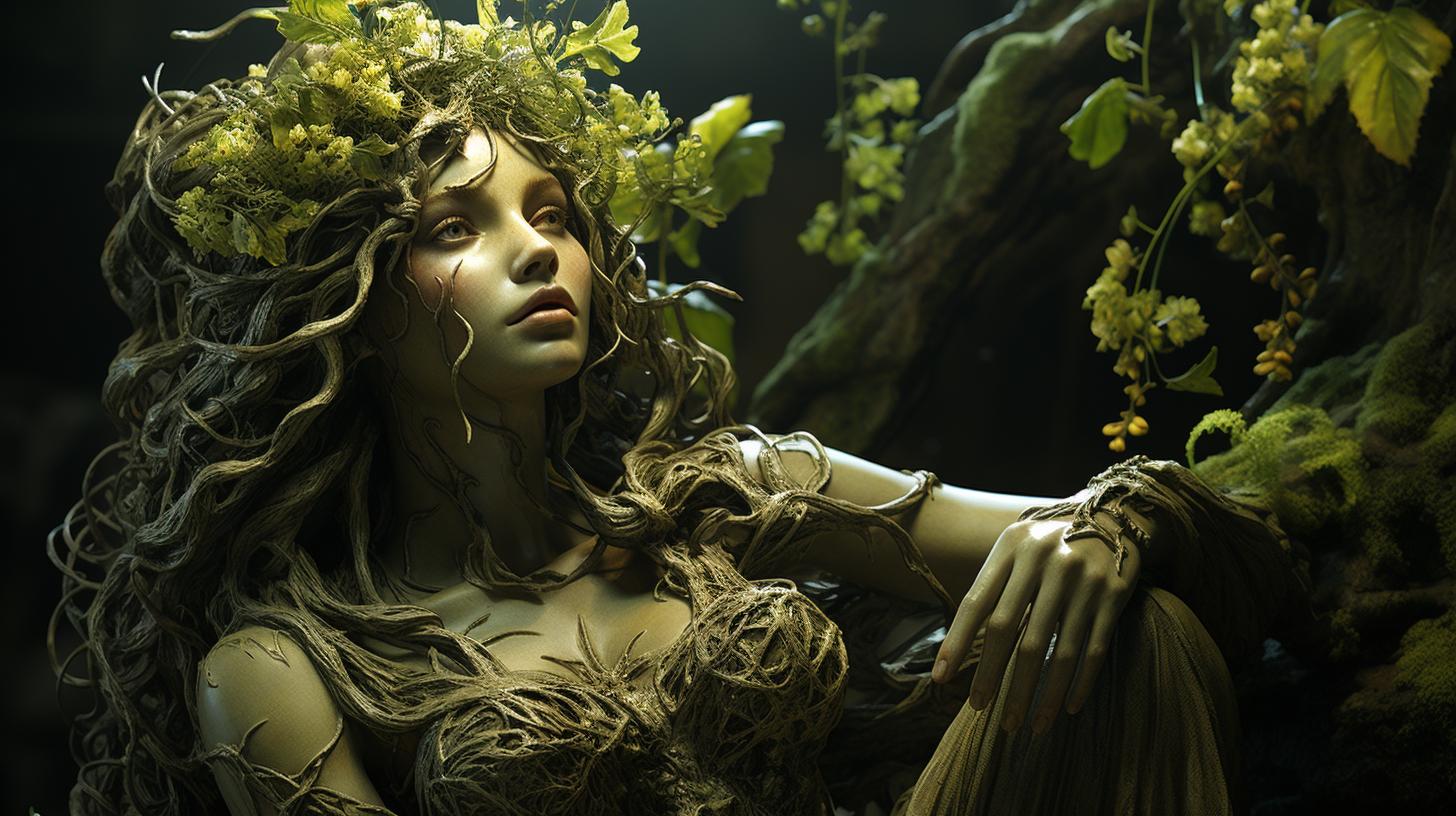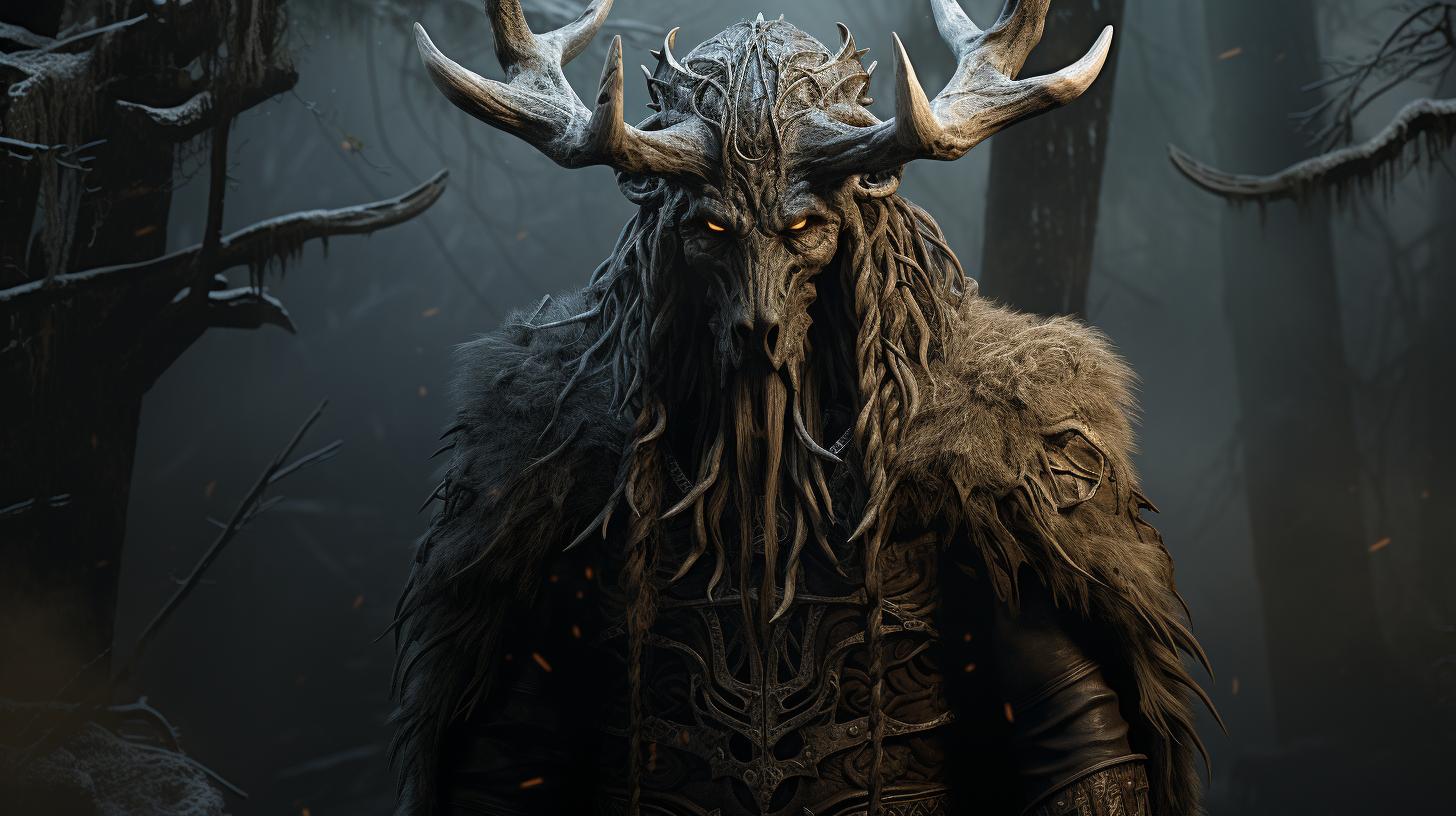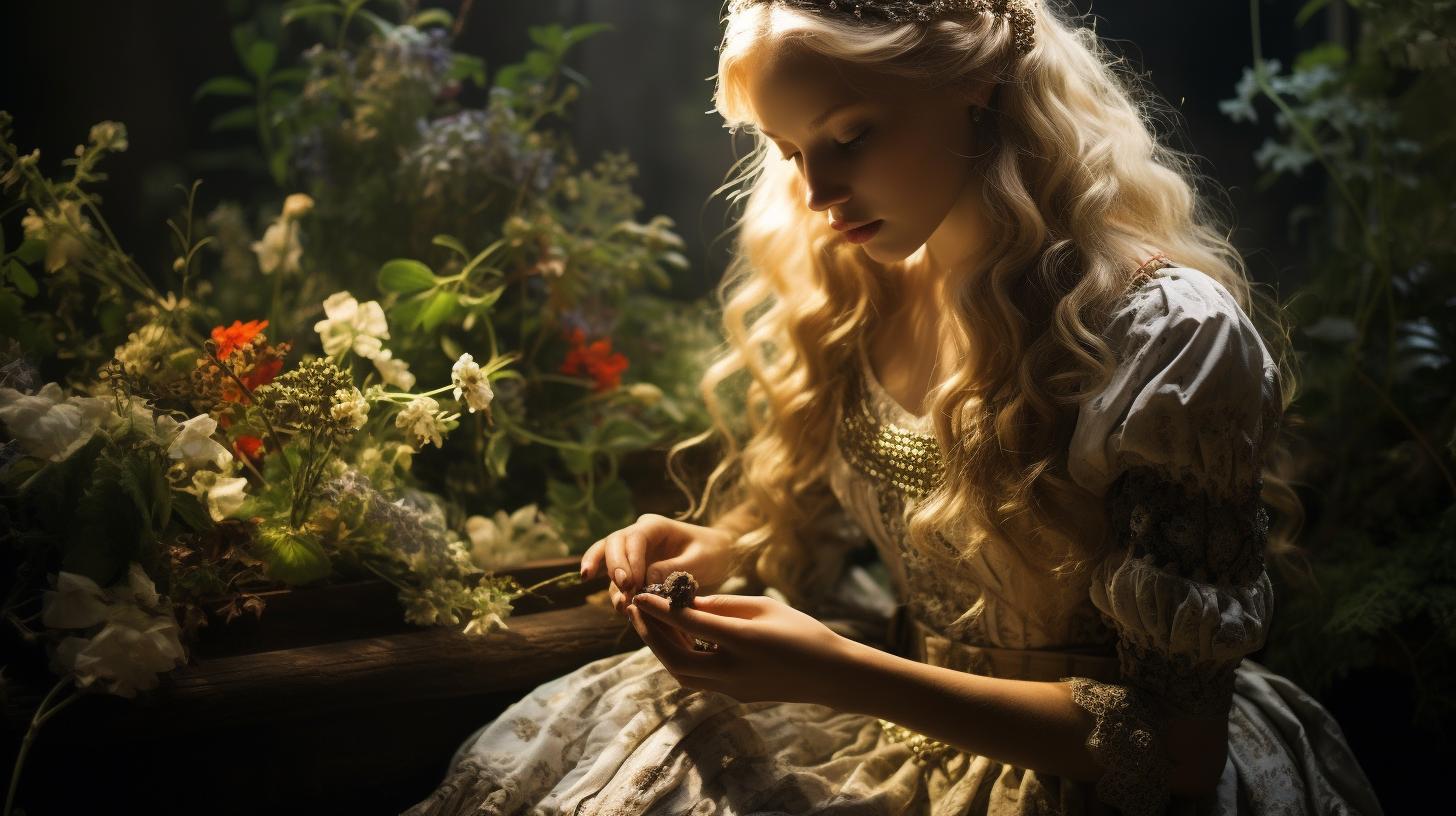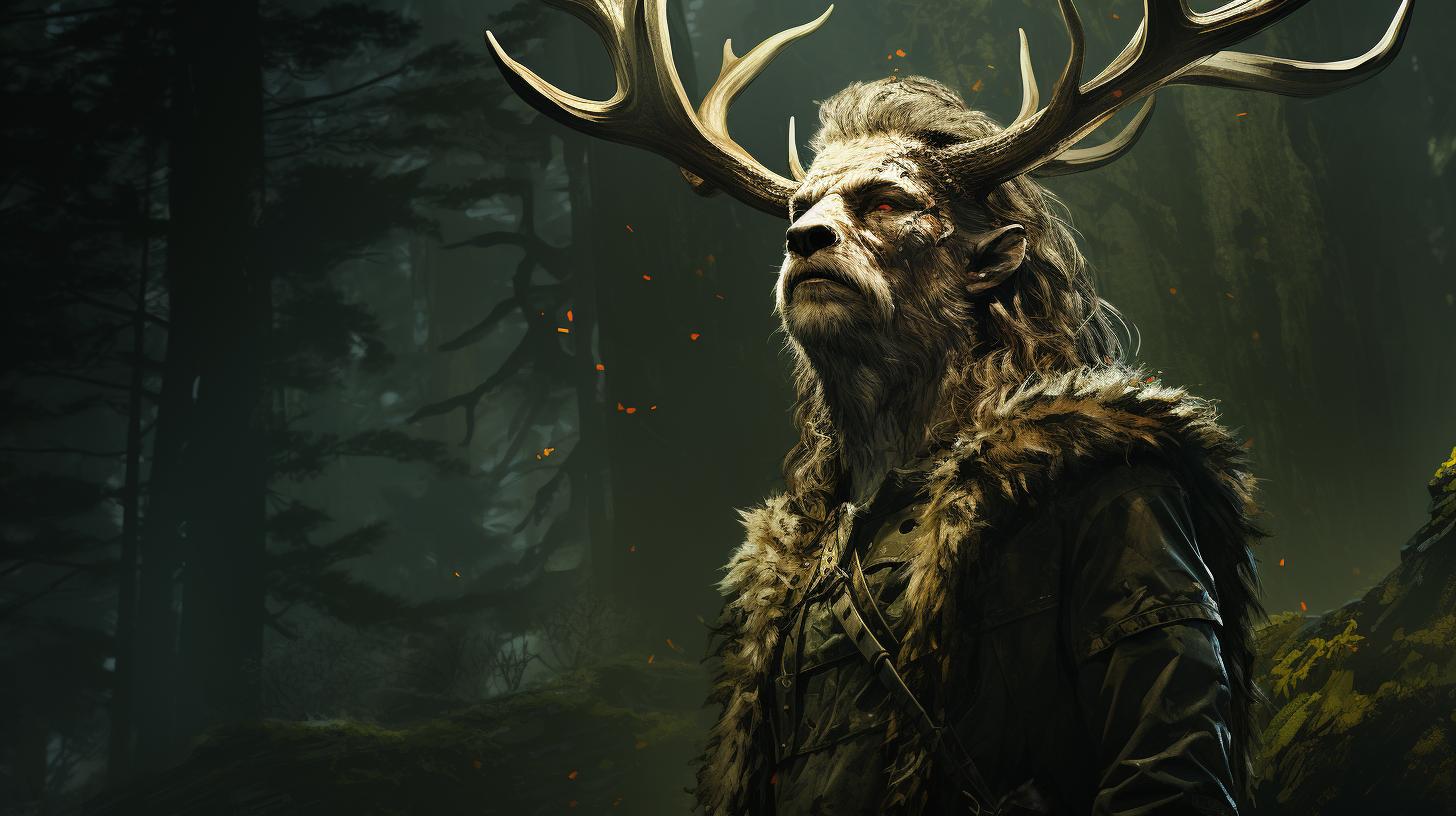Tapio Finnish God: The Mystical Ruler of Finnish Forests and Wildlife
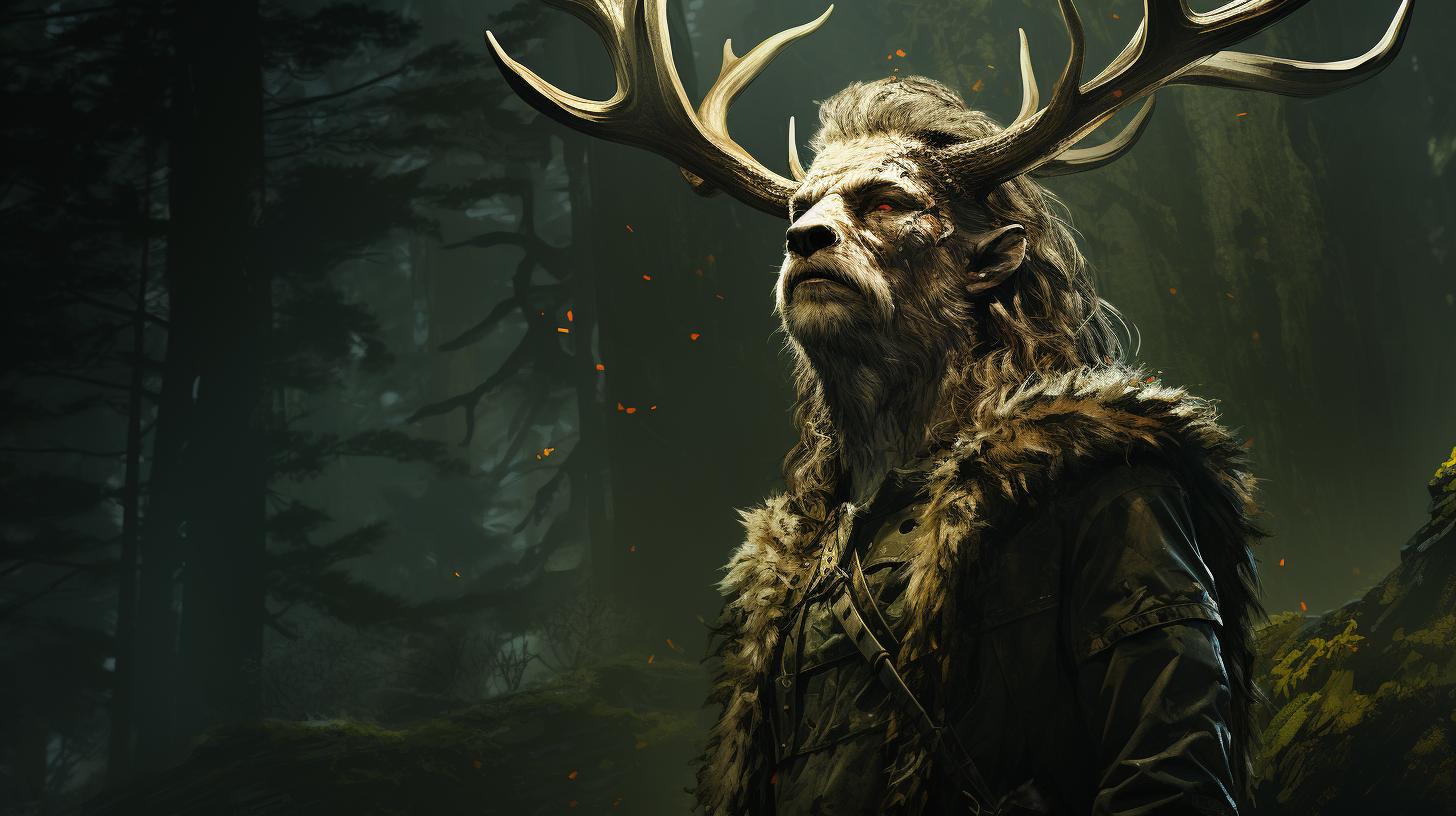
Tapio, the Finnish god of the forest, holds great significance in Finnish mythology. As the ruler of the woodland realm, Tapio is revered by hunters and foresters who depend on him for sustenance.
Alongside Tapio is his wife, Mielikki, the goddess of healing and the forest. This article explores their roles and connections within Finnish folklore, along with other gods and goddesses such as Nyyrikki, Annikki, Tellervo, Tuutikki, Vellamo, Louhi, and Ukko. Dive into the captivating world of Finnish mythology and its cultural importance.
Tapio: The Finnish God of the Forest
Tapio, known as the Finnish god of the forest, holds a significant place in Finnish mythology. He is revered as the ruler of the forests and the guardian of the wildlife that inhabits it.
Tapio’s origins can be traced back to ancient Finnish folklore, where he was believed to be the personification of the forest itself, symbolizing its power and mystique.
Origins and Significance of Tapio in Finnish Mythology
Tapio’s origins can be traced back to the ancient Finnish epic, the Kalevala, which is considered the national epic of Finland. In the Kalevala, Tapio is described as a powerful and enigmatic deity, often depicted as a tall, old tree with a twisted appearance.
This portrayal reflects his connection to the ancient forests and his role as the guardian of their secrets and inhabitants.
The significance of Tapio in Finnish mythology lies in his association with fertility, abundance, and the essential role he plays in sustaining the balance of the forest ecosystem. Finnish people viewed Tapio as a benevolent deity, one to be appeased and respected, as they depended on the forest for their livelihoods, particularly hunting and forestry.
Tapio’s Role in Finnish Hunting and Forestry
Tapio played a crucial role in Finnish hunting and forestry practices, as hunters and foresters believed that their success and prosperity depended on his favor. They offered prayers and offerings to Tapio, seeking his blessings and guidance for a successful hunt or a fruitful harvest of timber.
In Finnish folklore, Tapio was also associated with the spirits of the forest, who could either aid or hinder hunters and foresters. These capricious spirits required constant appeasement and respect to ensure their cooperation and avoid their wrath.
Hunters and foresters adhered to certain taboos while in the forest, such as avoiding excessive noise and refraining from shooting unusual birds that might be disguised forest spirits. This respect for the forest and its inhabitants was crucial in maintaining a harmonious relationship with Tapio and the spirits under his domain.
Tapio’s role as the guardian of the forest and its wildlife reflects the deep reverence that Finnish people have for nature and their intimate connection with the natural world.
His presence is still felt in Finnish culture today, as Tapio serves as a symbol of the profound relationship between humans and the forest that sustains them.
Mielikki: The Goddess of the Forest and Healing
Mielikki, the enchanting goddess of the forest and healing, holds a significant position in Finnish mythology.
As the wife of Tapio, the god of the forest, she is intricately connected to the natural world and its spiritual energies. Let’s explore Mielikki’s relationship with Tapio and the extraordinary powers she possesses.
Mielikki’s Relationship with Tapio and Her Powers
Mielikki’s bond with Tapio is one of divine harmony. Together, they govern the forest and its inhabitants, providing sustenance and protection to hunters and foresters. Mielikki is often depicted as a beautiful woman with an innate ability to attract those who venture into the woods.
However, upon close observation, she unveils her true form, resembling a decaying log.
Her powers extend beyond her alluring appearance. Mielikki possesses profound healing abilities, known for her expertise in herbology.
She is revered by shamans and witches who seek her guidance in utilizing the magical properties of plants and natural remedies to restore health and well-being.
Mielikki’s Influence on Finnish Hunting and Herbology
Mielikki’s influence in Finnish hunting traditions is undeniable.
Hunters seek her permission before venturing into the forest, offering prayers for a successful hunt. It is believed that Mielikki guides them to game and bestows good fortune upon those who show respect and care for the natural world.
Furthermore, Mielikki’s expertise in herbology plays a crucial role in Finnish folk medicine. Her knowledge of medicinal plants and their properties empowers healers to treat ailments and harness the healing energies of the forest.
The enchanting goddess serves as a beacon of wisdom, guiding those who seek balance and restoration.
Mielikki’s presence in Finnish mythology showcases the deep connection between nature and healing. Her enchanting aura and healing powers are revered by those who understand the profound impact of the forest on human well-being.
Other Finnish Gods and Goddesses in Mythology
Nyyrikki is a prominent deity in Finnish mythology associated with the realms of hunting and cattle. As a god of hunting, he is revered by hunters who seek his favor for successful hunts and bountiful game.
Nyyrikki is also considered the protector of cattle, ensuring their fertility and well-being. In Finnish folklore, he is depicted as a powerful figure, often portrayed as a hunter wielding a spear and accompanied by animals such as bears and wolves.
Annikki, Tellervo, and Tuutikki: Spirits of the Forest
Annikki, Tellervo, and Tuutikki are three important forest spirits in Finnish mythology. Annikki is associated with the protection of trees and the growth of forests. Tellervo, on the other hand, embodies fertility and the flourishing of natural life within the forest.
Tuutikki is revered as the guardian of the wilderness and the animals that inhabit it. Together, these spirits represent the interconnectedness of Finnish folklore and the deep reverence for the natural world.
Vellamo: The Goddess of Water, Seas, and Fishing
Vellamo is the goddess who reigns over the realms of water, seas, and fishing in Finnish mythology. She is worshipped by fishermen and sailors who seek her guidance and protection during their maritime endeavors.
Vellamo is believed to hold control over the tides, waves, and weather, ensuring safe journeys for those who respect her powers. With her profound influence on the waters, Vellamo symbolizes the connection between nature and the livelihoods of the Finnish people.
Louhi: The Goddess of Witchcraft and Shamanism
Louhi is a complex deity associated with witchcraft and shamanism in Finnish mythology. Often depicted as a powerful and enigmatic figure, she holds dominion over dark magic and mystical practices.
While some portray her as an evil witch, others recognize her as a symbolic representation of nature’s forces and the great mysteries of the universe. Louhi’s connection to shamanism further solidifies her significance as a bridge between the spiritual and earthly realms.
Ukko: The God of Thunder, Fertility, and Weather
In Finnish mythology, Ukko is revered as the god of thunder, fertility, and weather. As a mighty deity, he controls the elemental forces of nature, including thunderstorms and rainfall. Ukko is deeply associated with fertility, ensuring prosperous harvests and abundant crops.
His influence extends to the celestial realm, where he governs the skies and influences weather patterns. Ukko’s depiction often includes a majestic beard and attire made of natural elements, symbolizing his connection to the earth.
Tapio in Finnish Folklore and Cultural Significance
In Finnish folklore, Tapio holds a prominent place as the god of the forest and hunting. His representation is found in the epic poem, Kalevala, and various Finnish folktales that have been passed down through generations.
These stories depict Tapio as a powerful and mysterious deity, ruling over the woodland realm and all its inhabitants.
Tapio’s Representation in Kalevala and Finnish Folktales
Kalevala, the national epic of Finland, portrays Tapio as a central figure in many narratives. He is often described as a commanding presence, embodying the essence of the forest and its untamed wilderness.
In these tales, Tapio is invoked by hunters seeking his favor, and his appearance influences the outcome of their hunts.
Through these stories, Tapio emerges as a symbol of the sacred connection between humans and nature in Finnish culture.
His role as the guardian of the forest reflects the deep reverence the Finns have for their natural surroundings and their understanding of the interdependence between mankind and the environment.
Tapio’s Symbolism in Finnish Art, Literature, and Traditions
Tapio’s significance extends beyond folklore and permeates Finnish art, literature, and traditions.
Artists throughout history have depicted Tapio in their works, capturing his complex nature and his power over the forest. His portrayal often evokes a sense of both awe and fear, representing the duality of the wild and unpredictable forces of nature.
In literature, Tapio’s archetype is a recurring theme, symbolizing the untamed spirit of the wilderness and the vital role it plays in Finnish identity. Writers draw inspiration from Tapio’s character to explore themes of harmony with nature, the cycle of life, and the preservation of ancestral traditions.
In traditional Finnish practices, Tapio is celebrated during ceremonies and festivals, where homage is paid to the abundance of the forest and the blessings it provides. These rituals highlight the enduring connection between the Finnish people and Tapio, emphasizing the importance of respecting the natural world.
- The representation of Tapio in Kalevala
- Tapio’s role as the guardian of the forest and wildlife
- Tales of Tapio’s influence on hunters and their hunts
- Tapio’s symbolism as a guardian of the wilderness
- Artistic depictions of Tapio throughout Finnish history
- Tapio’s presence in Finnish literature and its themes
- Tapio’s significance in traditional Finnish practices and celebrations
Exploring Finnish Mythology and Symbols
Within Finnish mythology, there exists a rich tapestry of gods, goddesses, and symbolic meanings that provide insight into the ancient traditions and beliefs of the Finnish people.
This section aims to delve deeper into Finnish mythology and explore the key figures and symbolic interpretations associated with it.
Overview of Finnish Mythology and its Key Figures
Finnish mythology is a complex web of stories and legends that revolve around gods, goddesses, spirits, and mystical creatures. These tales are deeply rooted in the natural world, reflecting the close connection between the Finnish people and their environment.
- Tapio: As the Finnish god of the forest, Tapio reigns over the woodland realm and oversees the animals that inhabit it. His formidable presence and enigmatic nature make him a central figure in Finnish mythology.
- Mielikki: Tapio’s wife, Mielikki, holds the title of the goddess of the forest and healing.
She possesses incredible powers and is revered for her ability to bring forth health and abundance.
- Nyyrikki: As the god of hunting and cattle, Nyyrikki plays a crucial role in ensuring successful hunts and bountiful herds.
His blessings are sought by those in search of sustenance.
- Annikki, Tellervo, and Tuutikki: These spirits of the forest are considered vital messengers and protectors of nature. They watch over the woodlands and maintain the delicate balance of its inhabitants.
- Vellamo: The goddess of water, seas, and fishing, Vellamo holds sway over the aquatic realms.
Her influence extends to the safety of fishermen and the prosperity of those dependent on the waters.
- Louhi: Possessing powers of witchcraft and shamanism, Louhi is a complex deity associated with the moon and dark arts.
While she is often portrayed as a malevolent figure, her role in Finnish mythology is significant.
- Ukko: Revered as the god of thunder, fertility, and weather, Ukko commands the forces of nature.
His thunderous presence and association with fertility symbolize the awe-inspiring power of the natural world.
Symbolic Meanings and Interpretations in Finnish Mythology
Throughout Finnish mythology, numerous symbols and interpretations hold deep significance and contribute to a broader understanding of the Finnish cultural identity.
- The Forest: Symbolizing the Finnish connection to nature, the forest represents a sacred space where Tapio and Mielikki reign.
It is seen as a provider of sustenance, shelter, and spiritual solace.
- Hunting and Gathering: As a way of life for the Finnish people, hunting and gathering have profound symbolic meanings within Finnish mythology.
They represent the eternal cycle of life, the pursuit of sustenance, and the harmonious relationship between humans and nature.
- The Moon: In Finnish mythology, the moon embodies mystical energies and the cyclical nature of life.
Louhi’s association with the moon further adds depth to its symbolic significance.
- Water: Vellamo’s dominion over water highlights its essential role in Finnish culture, connecting people to the vast lakes, rivers, and seas.
Water symbolizes life, purification, and renewal.
- Thunder: Ukko’s control over thunder signifies the power of the elements. Thunderstorms are seen as Ukko’s displays of strength and vitality, and they evoke both awe and respect.
.











